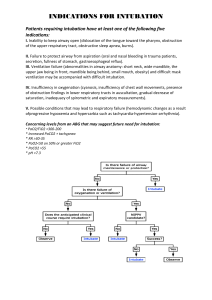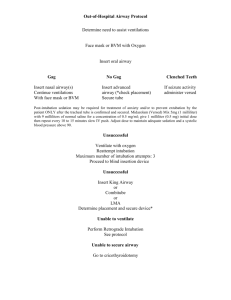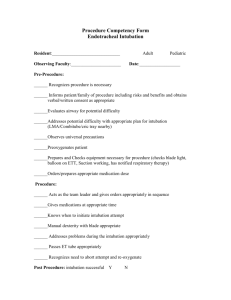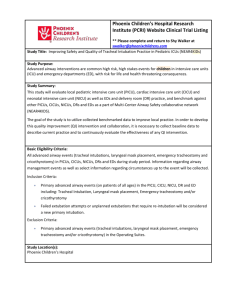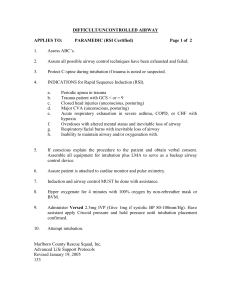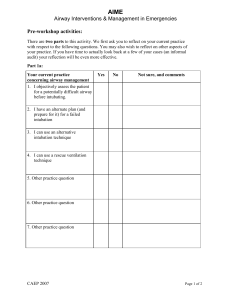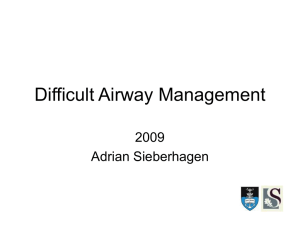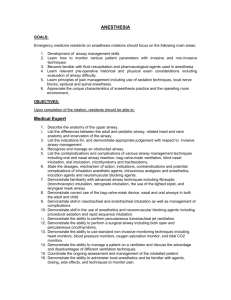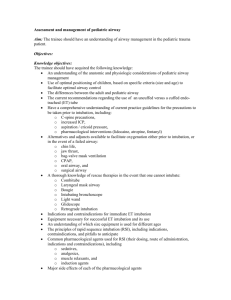The Difficult and Failed Airway
advertisement
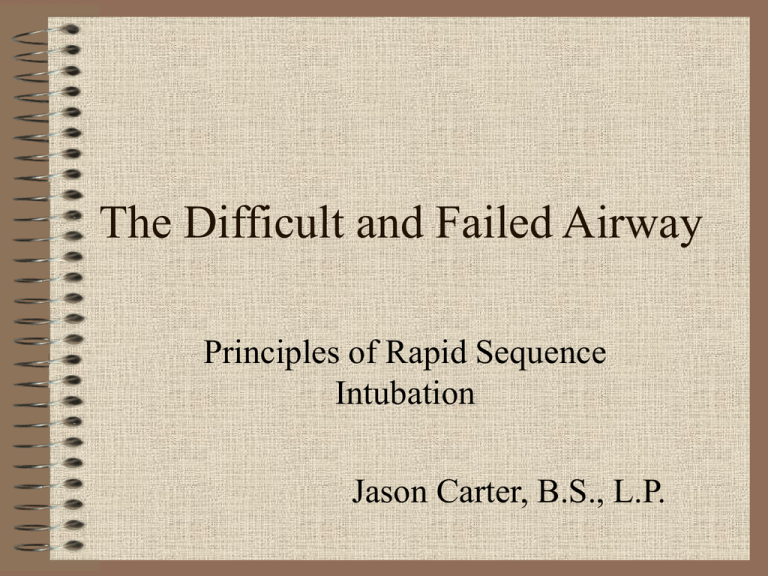
The Difficult and Failed Airway Principles of Rapid Sequence Intubation Jason Carter, B.S., L.P. I. The Difficult Airway A. Defined • • • Difficult to oxygenate and ventilate Difficult to intubate Difficult to perform a cricothyroidotomy B. Predicting the Difficult Airway • • • • • LEMON law Look externally Evaluate the 3-3-2 rule Mallampati classification Obstruction ? Neck Mobility 1. Look externally • Beard or Moustache that hinders seal of BVM • Abnormal Facial Shape • Extreme cachexia • Endentulous mouth with sunken cheeks • Disruption of the lower face due to trauma. • Large central incisors • High-arching palate • Receding mandible • Short bull neck • Morbid obesity 2. Evaluate the 3-3-2 Rule • Three finger mouth opening • Three finger mentum-to-hyoid • Two finger floor-of-mouth-to-thyroid cartilage 3. Mallampati classification • Spaciousness of mouth • Done sitting with head in sniffing position, mouth wide open and tongue sticking out 4. Obstruction • • • • • • Foreign object – Magill forceps Laryngeal tumor Known or suspected epiglottitis Known or suspected peritonsillar abscess Direct airway trauma Extrinsic airway hematoma with compression 5. Neck mobility • Spinal motion restriction automatically makes the RSI difficult • Non-trauma patients should be able to bring their head into the sniffing position II. Clinical Approach to the Difficult Airway • First complication is mechanics • Worst is esophageal intubation • Factors in failure vs. success A. Clinical Techniques • • • • • • Re-position the head – non-traumatic Jaw Lift in trauma patients Miller blade for epiglottis BURP technique Leave inadvertent esophageal tube in place 1 – 1.5 size smaller ETT III. The Failed Airway A. Failed airway defined • failure of single attempt at oral intubation followed by inability to maintain SpO2 90% with BVM • Three failed attempts made by an experienced airway manager B. Management of the Failed Airway • “Can’t intubate, can oxygenate” has time – – – – CombiTube Placement Digital Intubation Smaller tube BURP • “Can’t intubate, cannot oxygenate” immediate response – Needle or Surgical Cricothyroidotomy IV. Conclusion • General Rule—prepare for the worst and hope for the best • Before RSI, determine difficulty of intubation using LEMON law • All Spinal Motion Restriction patients are automatically difficult • Keep up intubation skills

